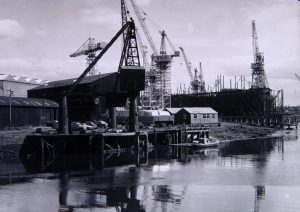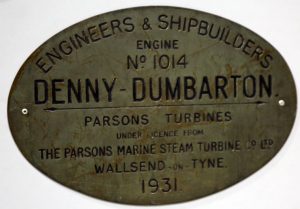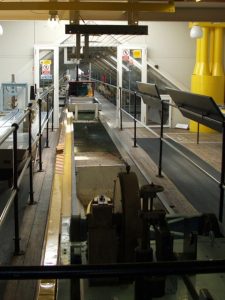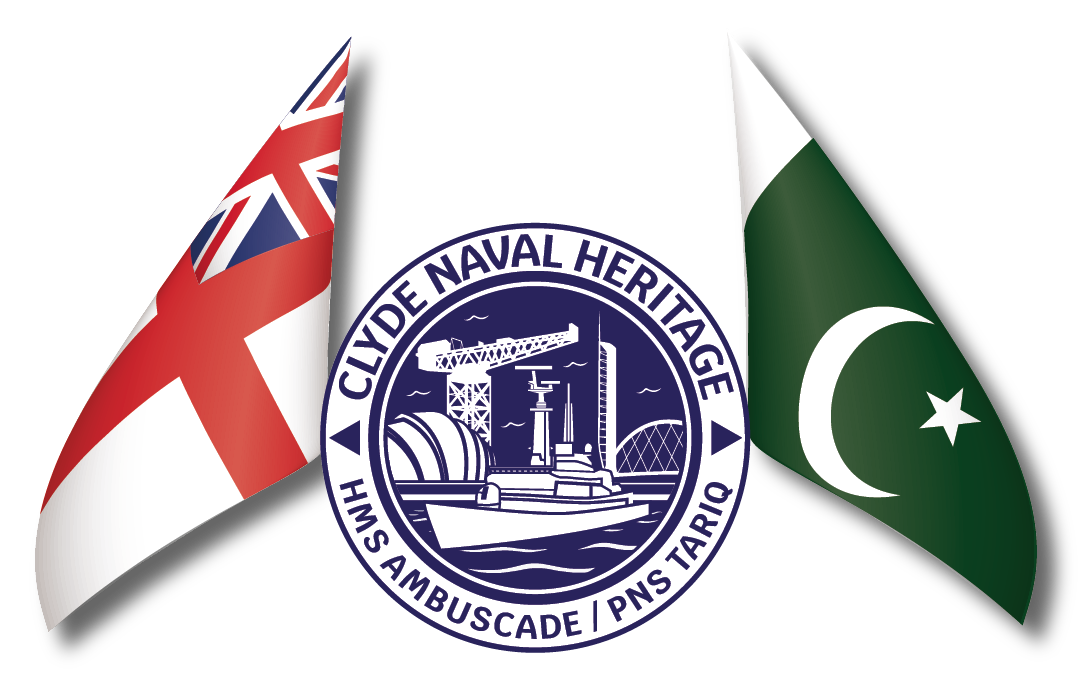Denny Brothers was a renowned name in shipbuilding and marine engineering, particularly during the 19th and early 20th centuries. Located in Dumbarton, near Glasgow, Scotland, this family-run business played a pivotal role in the development of both commercial and military maritime vessels.

Founding and Early Years (1820-1840s)
The origins of Denny Brothers can be traced back to the early 19th century, when William Denny founded a small shipbuilding company in Dumbarton around 1814. The business started modestly, focusing on wooden vessels that catered to the coastal trade routes of the Clyde River. William Denny’s sons, including Peter Denny, would later take over the company, forming what would become William Denny & Brothers in the 1840s.
Denny Brothers quickly gained a reputation for craftsmanship and reliability, building small ships that serviced local merchants and expanded gradually as Glasgow’s shipping needs grew with the rise of industrialization. By the mid-19th century, the Denny family had developed strong connections with shipowners and operators, positioning the company as a reliable builder in an increasingly competitive market.
Innovation and the Transition to Iron and Steam (1850-1870s)
The 1850s marked a significant shift for Denny Brothers as the industry transitioned from wooden sailing ships to iron-hulled, steam-powered vessels. The Denny family embraced this new technology and became early adopters of steam engines. Under Peter Denny’s leadership, the firm expanded and modernized its operations to compete with larger yards in Glasgow, including John Elder & Co. and Fairfield Shipyard.
In 1851, Denny Brothers launched its first iron vessel, the PS Rob Roy, marking its entry into the era of steam navigation. The company’s innovative approach to shipbuilding earned it numerous contracts, both domestically and internationally. They were pioneers in several important developments:
- The use of compound steam engines, which improved fuel efficiency and operational range.
- The construction of iron-clad warships for the British Admiralty, highlighting their engineering capabilities in defence.
By the 1870s, Denny Brothers had become one of the most prominent shipbuilders on the Clyde, attracting orders from clients across the British Empire.
Expansion and Global Recognition (1880-1900)
The late 19th century was a period of significant growth for Denny Brothers. The firm’s reputation for quality and innovation spread across the globe, with vessels being built for shipping lines in Australia, South America, and Asia. One of the company’s most notable contributions during this period was the development of the cross-channel steamers and luxurious ocean liners that catered to the growing transatlantic market.
Denny Brothers also established a testing facility known as the Denny Experimental Tank in 1883. This was one of the earliest hydrodynamic testing facilities in the world, where ship models were tested in controlled environments to determine the best hull designs for speed and efficiency. The Denny Tank was revolutionary and became a model for similar testing facilities worldwide. It allowed Denny Brothers to perfect their ship designs, giving them a competitive edge.
Some of the famous ships built during this period include:
- The SS Ailsa, a passenger steamer that became a popular Clyde ferry.
- The SS Livadia, a luxurious yacht commissioned by the Russian Tsar.

World War I and the Interwar Years (1914-1930s)
The outbreak of World War I in 1914 brought a surge in demand for military ships, and Denny Brothers played a critical role in the war effort. They produced various warships, including destroyers, minesweepers, and merchant vessels that were used to transport troops and supplies. The company’s ability to shift from peacetime to wartime production demonstrated its versatility and capacity for large-scale manufacturing.
During the interwar period, the shipbuilding industry faced challenges due to economic downturns, but Denny Brothers continued to innovate. They built the TS Queen Mary, one of the finest Clyde steamers, in 1933. Their focus on passenger vessels and smaller, efficient steamships helped them survive the turbulent economic conditions of the 1920s and 1930s.

World War II and Post-War Period (1939-1950s)
With the onset of World War II, Denny Brothers once again shifted towards military production, building various ships for the Royal Navy. These included escort vessels, submarine hunters, and cargo ships that played crucial roles in both the Atlantic and Pacific theatres of war. The post-war period brought new challenges as the shipbuilding industry underwent significant changes.
After the war, Denny Brothers continued to innovate, focusing on modern passenger ferries, and they were known for their highly efficient, streamlined designs. However, like many other shipbuilders on the Clyde, they began to face stiff competition from international shipyards, especially those in Japan and Korea.
The Decline of Denny Brothers (1960s-1963)
By the 1960s, the once-dominant British shipbuilding industry was in decline, facing global competition, rising costs, and changes in ship design that favoured larger yards capable of mass production. Denny Brothers struggled to compete with newer and more efficient shipyards. Their reliance on traditional methods, combined with the rise of container shipping and the shift to oil-fired ships, put enormous pressure on their business.
In 1963, after more than 150 years of operation, Denny Brothers closed its doors. The company had contributed significantly to the development of shipbuilding technology and produced some of the most iconic vessels of the 19th and 20th centuries, but like many Clyde shipyards, it was unable to adapt to the rapidly changing industry.
Legacy and the Denny Ship Model Experiment Tank
Although Denny Brothers is no longer operational, its legacy lives on, particularly through the Denny Ship Model Experiment Tank, which remains a key part of Dumbarton’s industrial heritage. The tank is now part of the Scottish Maritime Museum, where visitors can explore the innovative ship designs and testing methods pioneered by Denny Brothers. The company’s contribution to maritime engineering, especially in hydrodynamics, remains highly respected.


